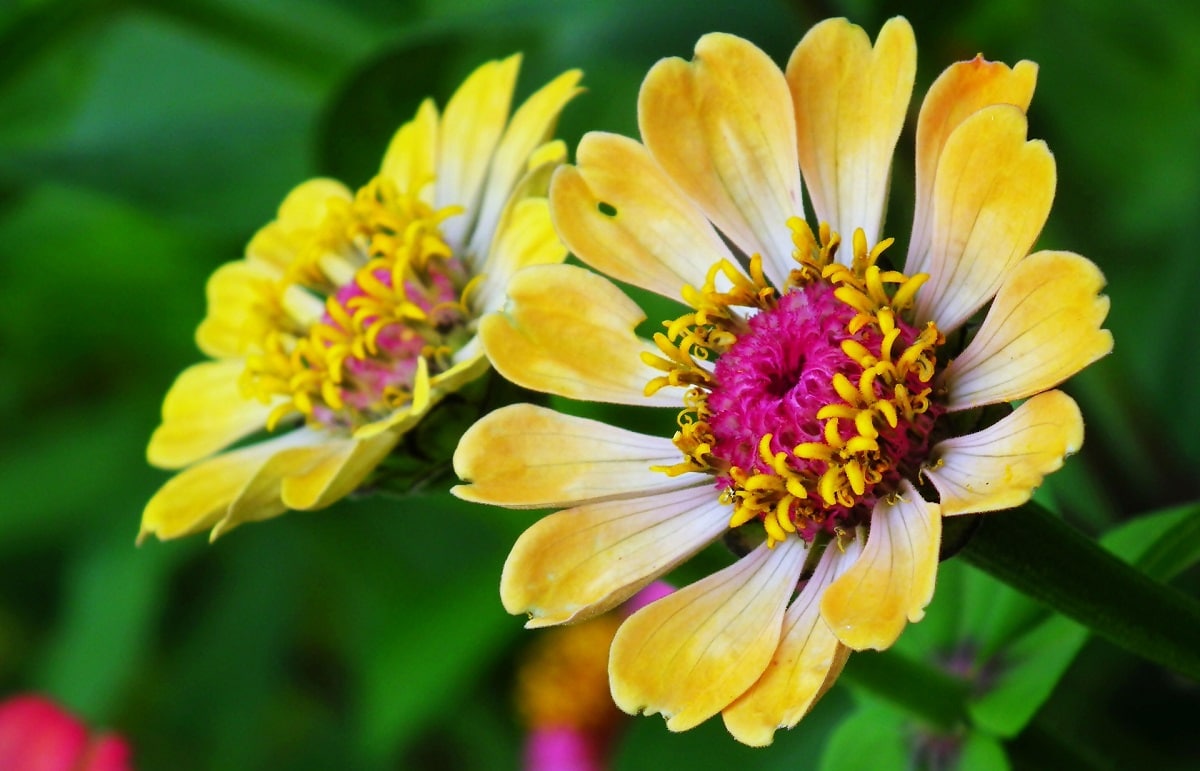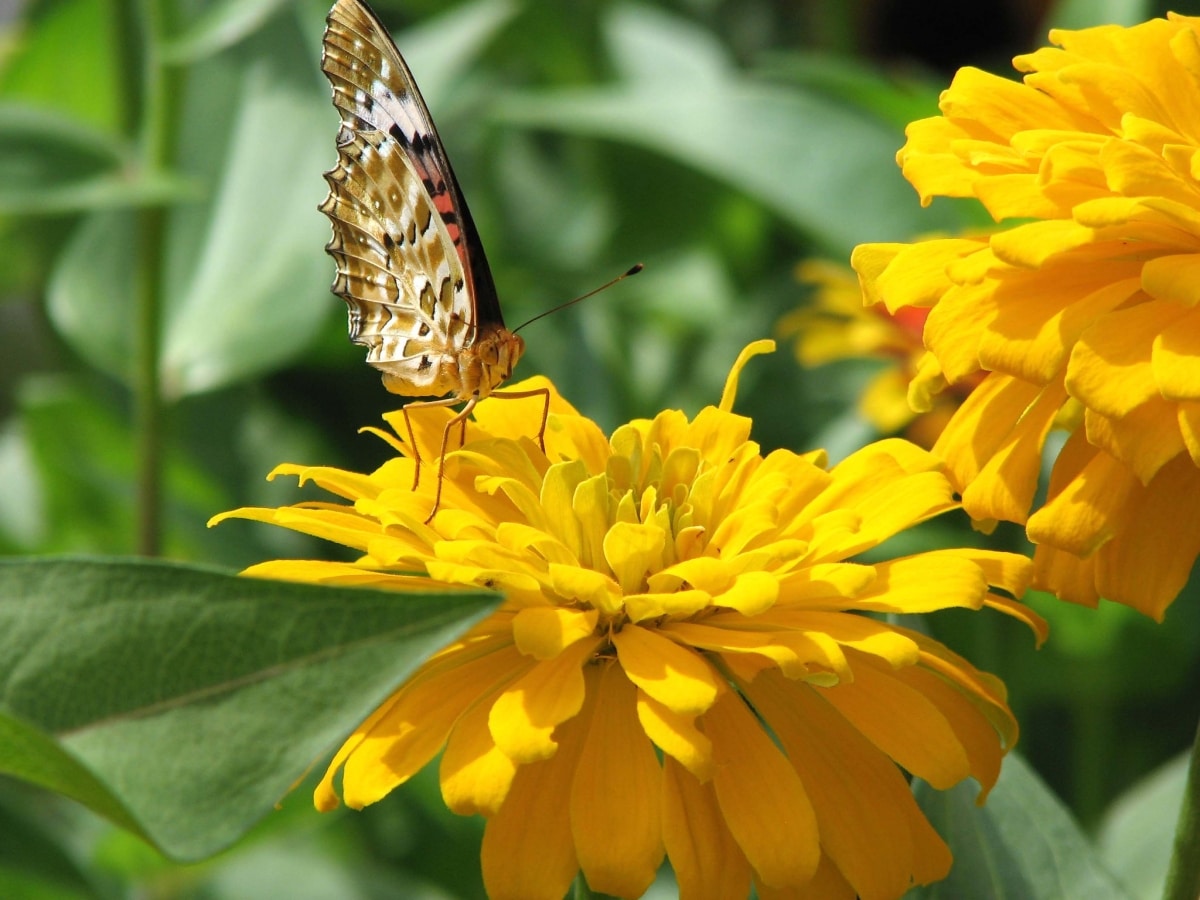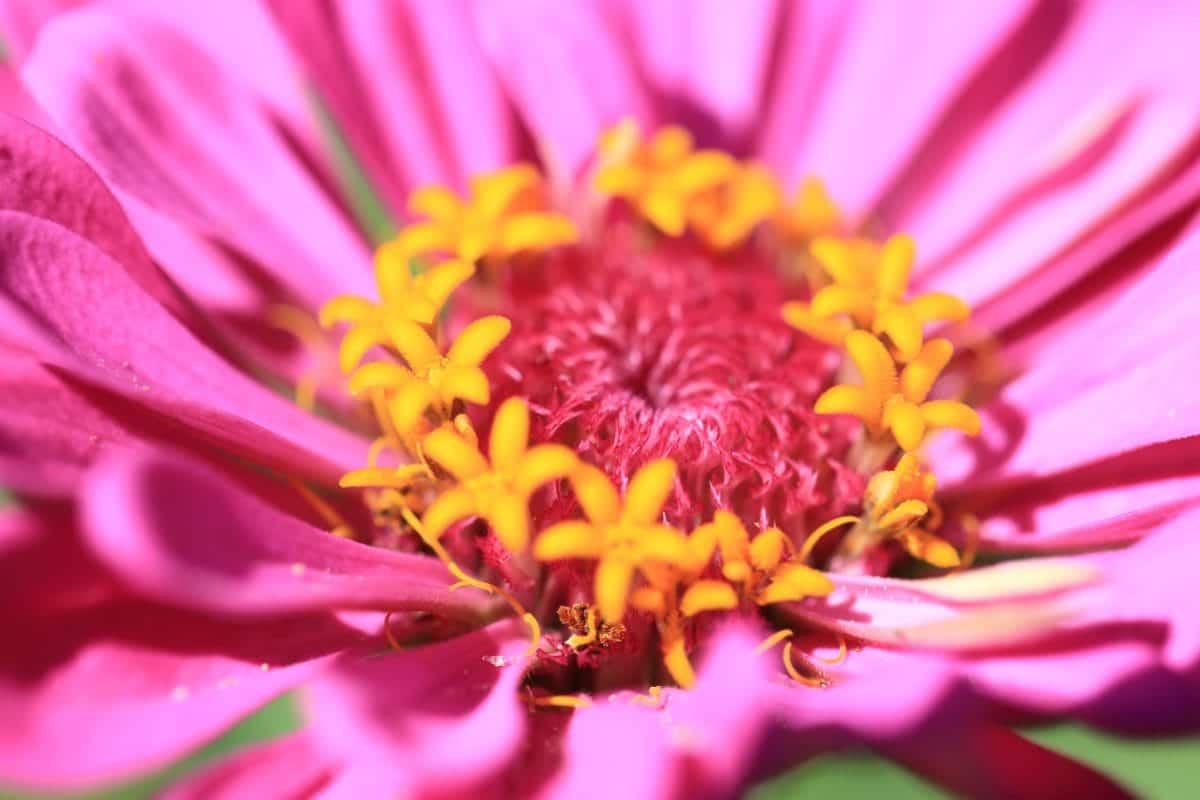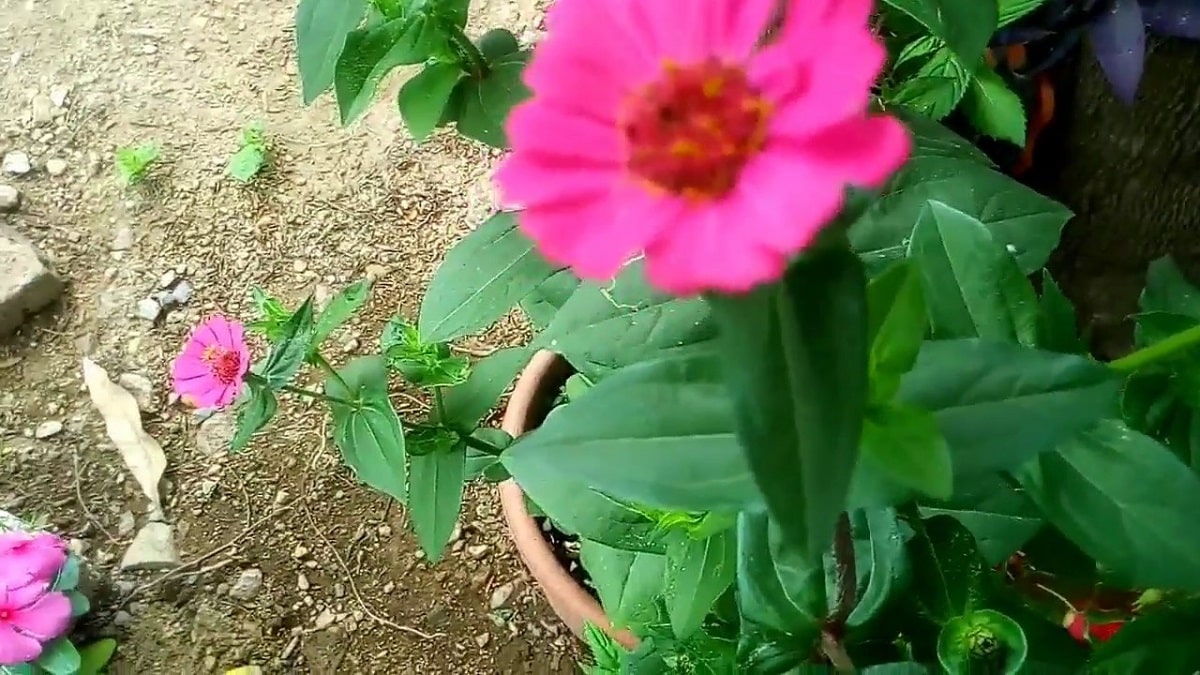
Zinnias, or paper flowers, are one of the most popular and easy to grow annuals. Its cheerful little flowers, similar to dahlias, are perfect for growing in containers and gardens. Many people wonder if the care of the potted zinnias change relative to the ground.
For this reason, we are going to dedicate this article to telling you about the care of potted zinnias and what aspects you must take into account so that they grow correctly.
Potted Zinnia Care

First of all, the most interesting thing about zinnias are their flowers, so you have to know that they bloom in spring until the colder months begin. Therefore, zinnias are the best plants for warm environments. You should look for bright areas of the garden that are sheltered from the wind. Of course, although they require a lot of light, they should not be exposed directly.
As for the substrate, a universal one can be used, but a specific one for flowering plants is recommended. Also, use a fertilizer made specifically for flowering plants to help with blooming.
A key aspect of its cultivation is exposure to sunlight. It is a plant that likes light and warm temperatures. The ideal temperature range for zinnias is between 15ºC and 25ºC. Although it supports partial shade, it needs to be exposed to direct sunlight for at least 6 to 8 hours.
Irrigation and fertilization

As for the soil, they need a light substrate. Irrigation will vary depending on whether it is in pots, which it must be continuous every 2-3 days, or on the ground, which can be more spaced in time. A sign that may indicate that a plant needs more water is that it begins to lose its leaves.
If it is very hot, it will appreciate an extra watering, but not too much. If the pot becomes submerged, it can cause root rot and lead to the death of the plant. The proper way to water a zinnia is to avoid getting its leaves and flowers wet, as this can cause them to wilt prematurely. When they start doing this, they will need to be removed.
During the flowering season it should be applied a special fertilizer for flowering plants every 15 days.
Zinnias are easy to propagate by seed in spring. The seeds are harvested once the flowers begin to rot, you must wait until the petals are completely dry before removing the seeds. You will see how they acquire a darkened tone. You can store them for 2 years in the dark and without moisture.
Cultivation of zinnias in a pot

If you want to plant zinnias, you should do so in early spring. For it, Moisten the seedbed substrate and sprinkle the seeds over it. Then, you cover with more substrate and water. These will germinate in about 8 to 12 days, depending on the ambient temperature. That will be the perfect time to transplant them to their final location, whether in pots, pots, or in the garden.
Zinnias do not need very large pots, although it will vary depending on the variety chosen. Growing dwarf varieties is not the same as growing California giant zinnias.
The first thing to do when planting zinnias is to prepare the pots and cover the holes with some broken tiles to avoid the loss of soil. This way we will also make sure that the substrate that we put in the pot drains well. You can grow different varieties together to create very colorful compositions.
Plagues and diseases
Zinnias are susceptible to various fungal diseases and, once they occur, there is no cure for the infected plant. A well-drained soil in which the plants grow is the best preventative measure. Don't plant them crowded together either, but leave space between them so air can circulate freely through the foliage. Never water zinnias by wetting the aerial parts, use a dripper if possible, and if not, water so that the water falls directly on the base of the plant.
If you have to remove a diseased plant, don't even think about throwing it in the compost bin. Composting diseased plants can spread disease. Diseased specimens should be discarded.
Zinnias are not immune to certain insect attacks: some of them are miners, aphids, mites or beetles.
Characteristics and aspects to take into account
They are one of the most colorful and beautiful species. They can be grown in the garden or even indoors in well-lit areas. It is a plant native to Mexico, and although it is usually grown as an annual, the truth is that it is a perennial that can last several seasons in frost-free climates. Our protagonist has other names depending on the location, you may have heard her as Paper Flower or Mysterious Rose.
The plants are not very big, and even in the best circumstances it is normal that they do not reach 90 cm in height. The leaves are oval, dark green in color and rough to the touch. But even as a dwarf plant, its beautiful flowers make it a favorite with many gardeners. Especially since they are so brightly colored, they bring joy to the garden from late summer through fall.
Zinnias bloom from spring to fall. During this time, they are ubiquitous on nursery counters and attract attention for its intense shades of yellow, red, pink and even white. If you need a plant to decorate the interior of your home for a special occasion, zinnias are a perfect choice. Don't forget to move him outside after a few days because he's actually better there.
In the garden you have many possibilities. If you don't have enough space, a single sample will be the center of attention of the fall. But if you have more space, you can plant a large group in a flower bed.
You can buy your first zinnias from a nursery, then collect the seeds and save them for another season, as they are easy to propagate from seed. They are generally low maintenance plants, although they are susceptible to certain diseases and pest problems, as we have seen above.
Zinnias grow and thrive in full sun. and they thrive in many types of soil as long as it drains well. If the soil is clayey, heavy and wet, the roots will rot easily. If you sow zinnia seeds, do so in loamy, sandy soil when frost is no longer likely.
In warmer regions like the Mediterranean, where frost is not a problem, zinnia seeds are sown once they night temperatures exceed 10ºC. Another option is to sow zinnia seeds indoors for added protection against accidents in case it gets cold or frosty one night.
I hope that with this information you can learn more about the care of potted zinnias and their needs.